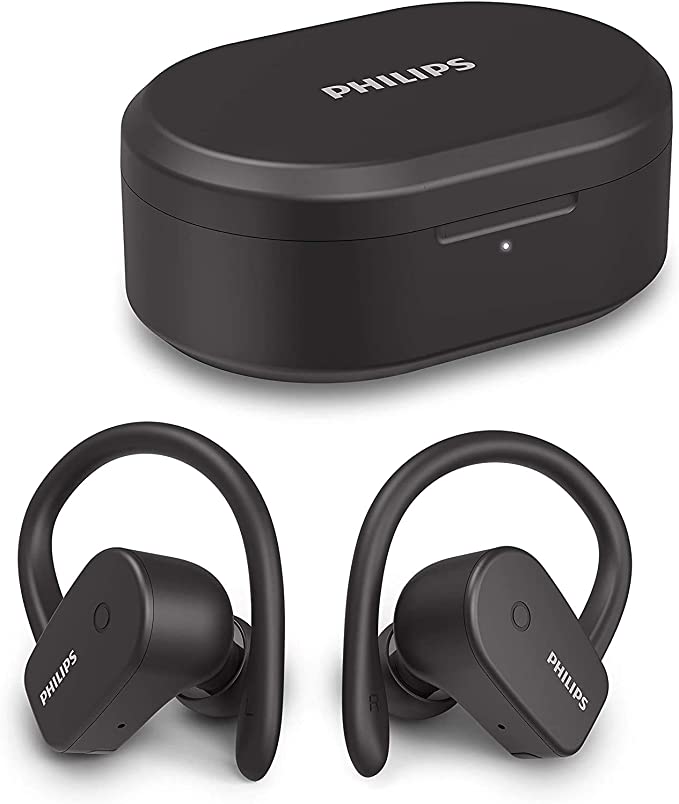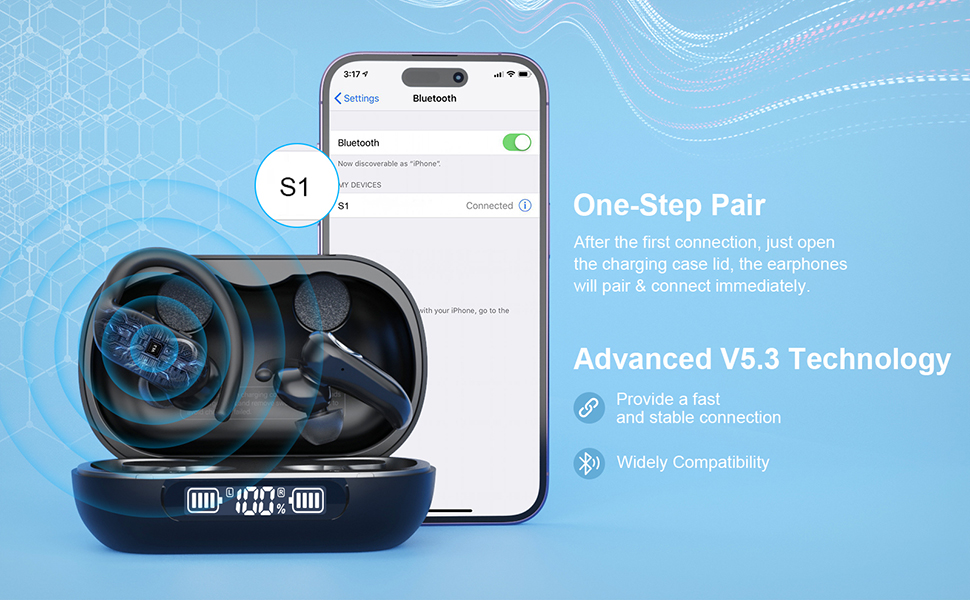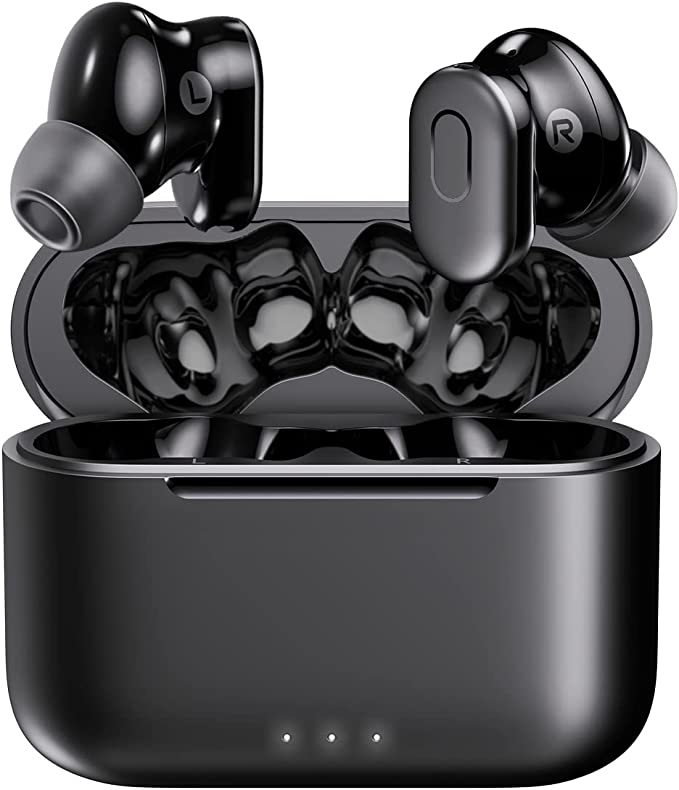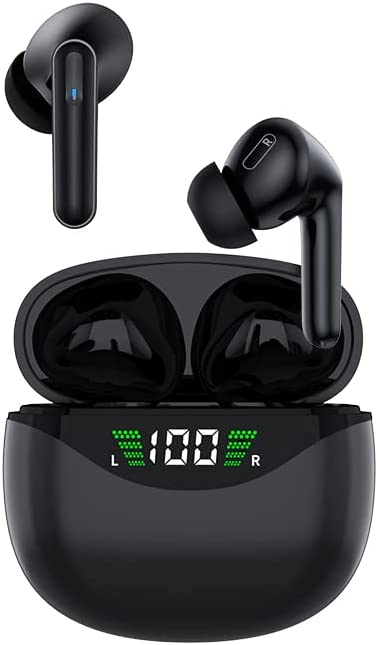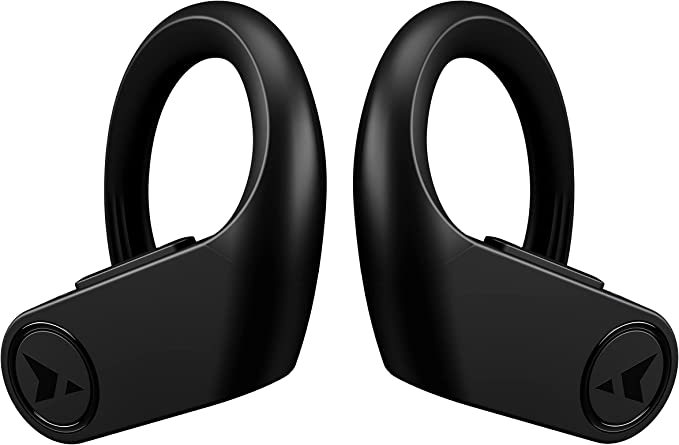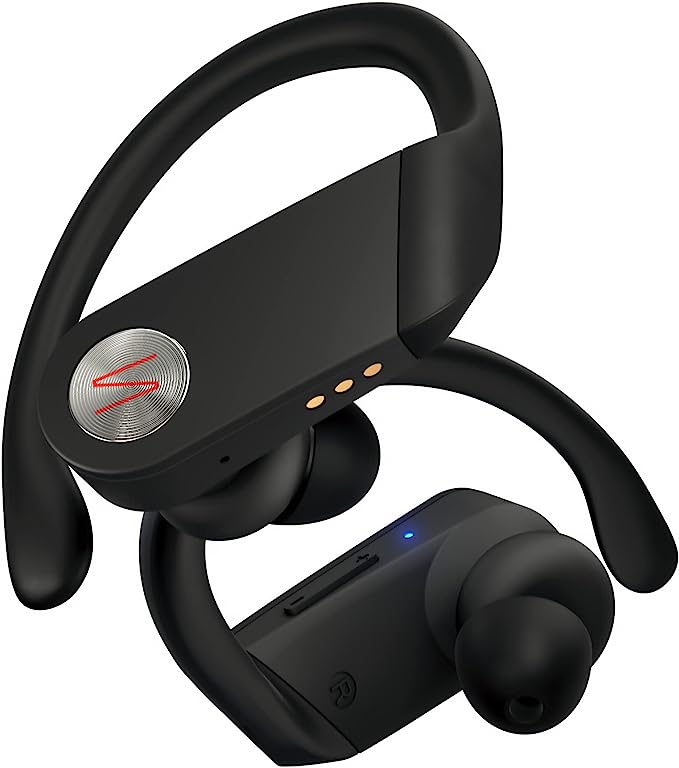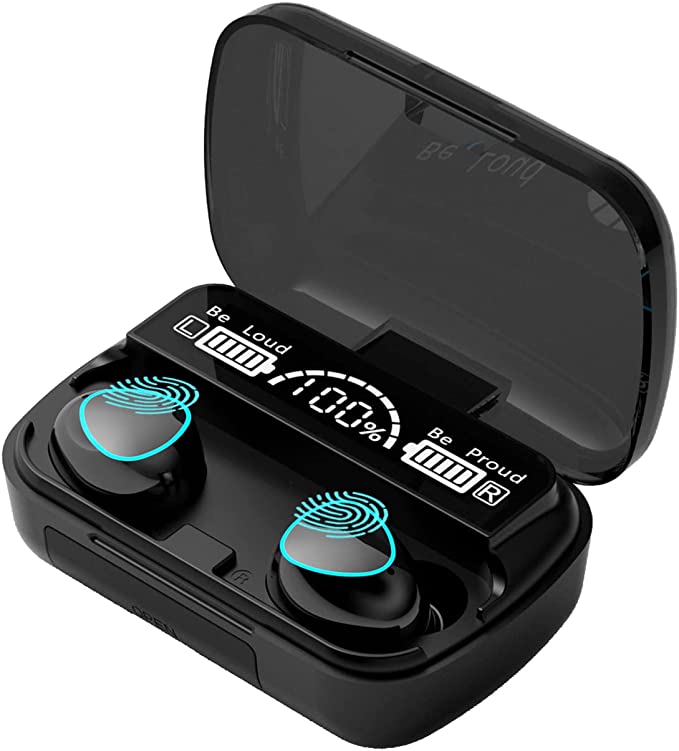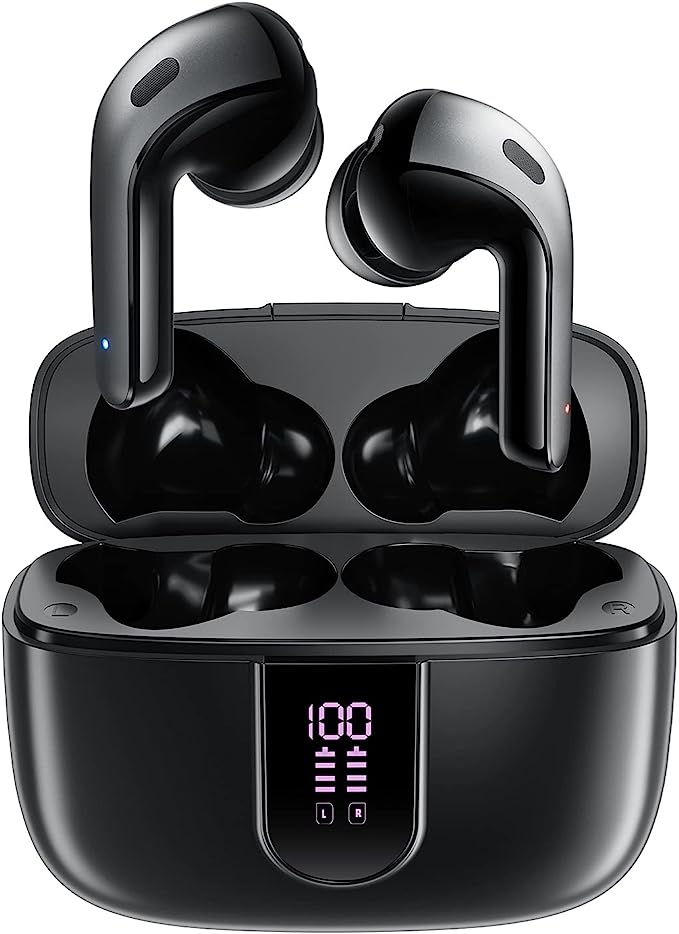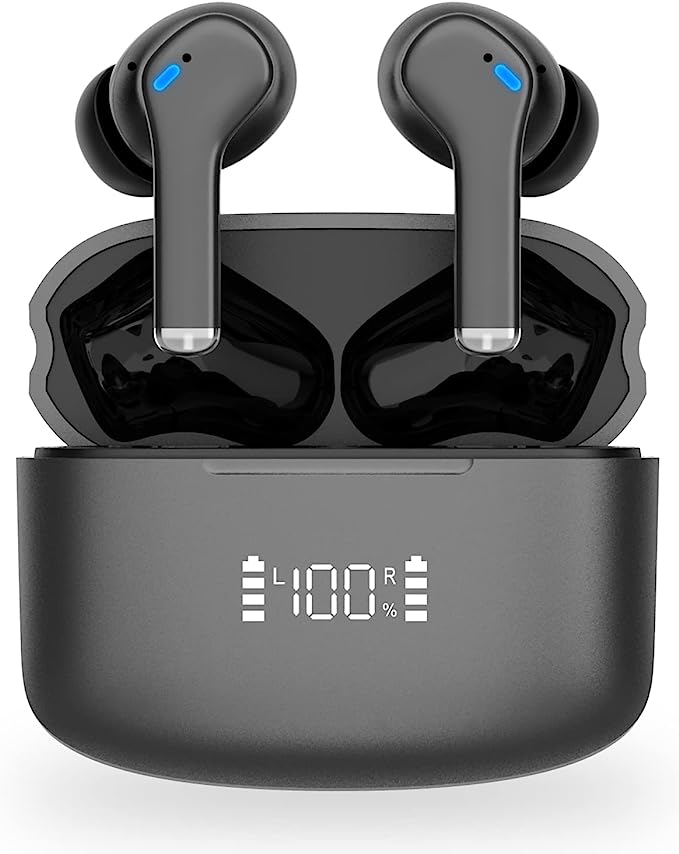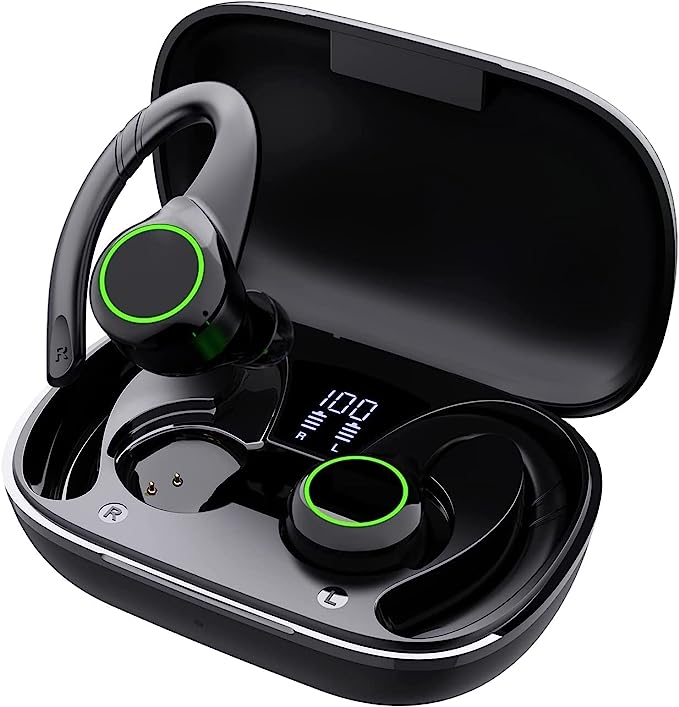GOLREX T59 Wireless Earbuds: Unpacking the Science of All-Day Audio and Athletic Freedom
Update on May 30, 2025, 3:07 p.m.
In the rhythm of a morning run, the focused intensity of a gym session, or the simple escape of a podcast during a daily commute, audio has become an indispensable companion. We crave that seamless soundtrack to our lives, that motivating beat or engaging narrative that pushes us further, entertains us, or simply makes the mundane more magical. Yet, the path to audio nirvana, especially when active, has often been fraught with petty annoyances: the tyranny of tangled wires, the dreaded low-battery warning mid-workout, or the frustrating slippage of an ill-fitting earbud. It’s a universal quest for that perfect blend of immersive sound, unwavering endurance, and forget-it’s-there comfort.
The evolution of personal audio, a journey from bulky, wired contraptions to the sleek, almost invisible true wireless earbuds of today, is a testament to relentless innovation. The GOLREX T59 Wireless Earbuds emerge from this lineage, not necessarily as a pinnacle of cutting-edge, wallet-emptying novelty, but as a fascinating case study in how accessible technology strives to meet these everyday demands of an active lifestyle. This isn’t just about a product; it’s an invitation to explore the often-overlooked science and thoughtful engineering packed into these compact companions. What if your earbuds could be more than just sound emitters, but reliable, almost intuitive partners in your pursuit of fitness and freedom?

The Heartbeat of Your Playlist – Decoding Sound & Immersion
At the very soul of any auditory experience lies the ability of a device to translate electrical signals into the rich tapestry of sound that moves us. The GOLREX T59, according to its specifications, entrusts this critical task to 11mm dynamic drivers. Now, “11mm driver” might sound like just another piece of tech jargon, but let’s unpack what that really means for the music pulsing through your ears.
Imagine a miniature, high-performance loudspeaker, meticulously engineered to fit snugly within your ear. That’s essentially what a dynamic driver is. It operates on a principle that’s been a cornerstone of audio engineering for over a century: an electrical current carrying the audio signal flows through a voice coil, which is attached to a diaphragm (a thin, flexible membrane). This coil sits within a magnetic field, and as the current fluctuates, it causes the coil and the attached diaphragm to vibrate. These vibrations displace air, creating sound waves that your eardrums perceive as music, voices, or the ambient sounds of your favorite podcast.
The “11mm” refers to the diameter of this diaphragm. Why does size matter here? Generally, a larger diaphragm has the potential to move a greater volume of air. Think of it like the difference between a small ripple and a larger wave in water. This increased air displacement often translates into a more robust and impactful bass response – that satisfying “oomph” that can drive a workout beat or add depth to a cinematic score. It can also contribute to a wider, more spacious soundstage, making the music feel less confined and more like a live performance. The GOLREX T59’s product information also highlights “high-fidelity audio” and “volume-optimized active EQ.” “High-fidelity” is the aspiration of any good audio device: to reproduce sound as faithfully as possible to the original recording, with minimal distortion or coloration. “Volume-optimized active EQ” is a more sophisticated touch. This technology intelligently adjusts the equalization – the balance of bass, midrange, and treble frequencies – as you change the volume. So, whether you’re listening at a low level during a cool-down or cranking it up for that final push, the aim is to maintain clarity and balance, preventing music from sounding thin at low volumes or overly harsh at high ones.
While the specific material of the T59’s diaphragm isn’t detailed in the provided information, it’s worth noting a general principle in audio science: the diaphragm’s material properties (its stiffness, lightness, and damping characteristics) play a crucial role in its ability to reproduce sound accurately across different frequencies, affecting everything from the crispness of high notes to the tightness of the bass. The mention of a “high compliance diaphragm” in the T59’s description suggests a material chosen for its flexibility, allowing it to respond effectively to low-frequency signals for that rich bass range, while still maintaining clarity elsewhere. It’s this intricate dance of physics and material science within that tiny casing that ultimately shapes your listening experience.

Unleashing Endurance – The Science of All-Day Power & Smart Charging
There’s little more frustrating than your audio cutting out teknolojia ya betri na usimamizi wa nguvu. The GOLREX T59 is stated to offer an impressive 36 hours of total playtime. This isn’t just a single, monolithic battery; it’s a cleverly designed “energy relay race.” The earbuds themselves are said to provide approximately 5-6 hours of listening on a single charge (at a moderate 50%-80% volume). Once depleted, they return to their portable 650mAh charging case, which acts like a mobile power bank, purportedly holding enough energy for about five additional full charges for the earbuds. This effectively multiplies the standalone playtime, turning hours into days for many users. Thirty-six hours could mean a full week of hour-long workouts and daily commutes without needing to find a wall socket.
Replenishing this power bank itself is designed for convenience, offering two mainstream methods. Firstly, the T59 case supports Qi wireless charging. This is the “drop and charge” elegance many have come to appreciate. Qi (pronounced “chee”) is a global standard for wireless power transfer based on the principle of electromagnetic induction. Hidden within a Qi-certified charging mat (which is not included with the T59) is a transmitter coil that generates an oscillating magnetic field. The T59’s case contains a compatible receiver coil. When the case is placed on the mat, this magnetic field induces an electrical current in the receiver coil, charging the case’s battery – almost like a digital handshake transferring energy through the air.
Secondly, for those who prefer a wired connection or don’t have a wireless charger handy, the case features a USB Type-C port. This has become the modern standard for charging and data transfer across a vast array of devices, lauded for its reversible connector (no more fumbling to plug it in the right way) and its general support for faster charging protocols. The GOLREX T59 specifications claim that a mere 15 minutes of charging can yield an hour of playback time. This rapid refueling is a common feature of modern lithium-ion battery charging systems, which can often accept a higher current during the initial phase of charging, quickly topping up a useful amount of power before tapering off to protect battery health.
Keeping track of all this power is made remarkably straightforward by the dual LED digital display on the charging case. This isn’t just a few blinking lights; it’s a clear, numerical percentage readout of the case’s remaining battery. Accompanying this are LED bars that animate to show the charging status of each individual earbud, fading out once an earbud is fully charged. This intuitive visual feedback system eliminates the guesswork often associated with earbud battery levels, allowing you to know at a glance when it’s time to recharge the case or when your earbuds are ready for their next session.
Underpinning all this is, typically, lithium-ion (or lithium-polymer) battery technology. These batteries have become ubiquitous in portable electronics due to their high energy density (packing a lot of power into a small, light package), relatively low self-discharge rate, and lack of “memory effect” that plagued older battery chemistries. The ongoing quest in battery science is for even greater energy density, faster charging, and longer cycle life, promising even more untethered freedom for our devices in the future.

Freedom in Motion – Ergonomics, Weatherproofing, & Seamless Control
For an audio companion to truly excel during active pursuits, it must not only sound good and last long but also feel like a natural extension of your body – secure, comfortable, and unfazed by the elements or your movements. The GOLREX T59 addresses these ergonomic and durability challenges with several key design features.
The most visually prominent of these is the secure-fit earhook design. Unlike earbuds that rely solely on an in-canal fit, the T59 incorporates soft, flexible hooks that loop over the top of your ears. This design leverages a simple biomechanical principle: by distributing some of the earbud’s weight and anchoring point over a larger, more stable part of the ear’s anatomy, it significantly enhances stability during dynamic movements like running, jumping, or high-intensity interval training. It’s an attempt to counter the G-forces of your workout that might otherwise dislodge a less secure earbud. This is further complemented by the inclusion of three sizes (S/M/L) of silicone eartips, allowing users to find a snug in-ear seal, which is crucial not only for stability but also for optimal sound delivery and passive noise isolation. The ergonomics of earbud design is a complex field, aiming to accommodate the vast diversity in human ear shapes and sizes while ensuring comfort over extended periods.
Then there’s the challenge of Mother Nature and the simple reality of human perspiration. The GOLREX T59 boasts an IPX7 waterproof rating. Let’s decode this: “IP” stands for Ingress Protection, a standard developed by the International Electrotechnical Commission (IEC). The first digit after IP (if present) refers to protection against solid particles (like dust); the “X” in IPX7 means the device hasn’t been specifically rated for dust ingress, or the manufacturer chose not to claim it. The crucial part here is the “7”. This digit signifies protection against the ingress of water. An IPX7 rating means the device is protected against the effects of temporary immersion in water under standardized conditions – specifically, up to 1 meter (about 3.3 feet) of fresh water for up to 30 minutes. Think of it as a well-sealed, temporary “diving suit” for your earbuds. This level of protection is typically achieved through a combination of tightly sealed casing seams, water-resistant materials, and sometimes protective nano-coatings on internal components. For the T59 user, this translates to peace of mind during sweaty workouts, runs in the rain, or even an accidental quick splash. However, it’s important to remember that IP ratings usually apply to fresh water; saltwater, chlorinated pool water, or soapy water can be more corrosive or behave differently, and IPX7 doesn’t mean they’re designed for swimming. Also, the charging port must be dry before connecting a cable.
Effortless control is another pillar of a good user experience, especially when you’re mid-activity and don’t want to fumble with your phone. The T59 features a one-button multi-function control on each earbud. This single, tactile button is designed to manage a range of commands – typically play/pause, skip tracks, answer/end calls, and activate your paired device’s voice assistant (like Siri or Google Assistant) – through a series of taps or presses (e.g., single tap, double tap, long press). The logic behind these commands is a core aspect of Human-Computer Interaction (HCI), aiming for intuitiveness and ease of learning. This is coupled with the convenience of auto power-on and connection. When you remove the earbuds from their charging case, they are designed to automatically turn on and attempt to pair with the last connected device – a sort of digital greeting that gets you to your audio faster. Furthermore, the support for mono and binaural modes offers flexibility. You can use a single earbud (left or right) independently, perhaps to stay more aware of your surroundings or to extend battery life by using one while the other charges, or use both for a full stereo experience.

The Unheard Conversation – A Glimpse into Clearer Calls
In an increasingly connected world, wireless earbuds are as much tools for communication as they are for entertainment. The ability to take a call clearly, without a symphony of background noise overwhelming your voice, is a highly valued feature. The GOLREX T59 product description mentions that its “Mics work together to reduce noises around you, keeping your voice sounding clear.”
While the provided information doesn’t delve into the specifics of the microphone technology or the noise-reduction algorithms employed, the phrase “Mics work together” generally implies the use of a multi-microphone array. The challenge in any noisy environment is for the earbuds to distinguish your voice, which is very close to at least one microphone, from all the other ambient sounds – the clatter of gym equipment, the hum of traffic, or the chatter of a crowd.
One common approach in consumer electronics involves using two or more microphones per earbud. These microphones capture sound from slightly different positions. By analyzing the phase and amplitude differences in the sound waves reaching each microphone, sophisticated algorithms (often running on a dedicated Digital Signal Processor or DSP) can attempt to identify and isolate the primary sound source (your voice) while attenuating or suppressing more diffuse background noise. This could involve techniques like beamforming, where the microphone array effectively “listens” more intently in the direction of your mouth, or differential microphone techniques, which focus on the sound pressure differences between microphones to cancel out noise that arrives equally at all of them. The goal is to enhance the signal-to-noise ratio (SNR), making your voice stand out more clearly to the person on the other end of the call. The actual effectiveness can vary greatly depending on the number and quality of the microphones, the sophistication of the processing algorithms, and the nature of the background noise itself.
Some users have reported positive experiences with the T59’s call quality, suggesting the system provides a discernible improvement in noisy situations. However, without detailed technical specifications, we are appreciating the intended outcome rather than dissecting a specific, named noise-cancellation technology (like Qualcomm’s cVc or an adaptive active noise cancellation for calls). It’s a reminder that even in accessible tech, there’s a quiet effort to make our conversations clearer.
Weaving in User Experiences & The GOLREX Approach
It’s one thing to examine specifications on paper, but the true test of any technology lies in its real-world application. The user feedback accompanying the GOLREX T59 product information paints a picture of these technologies in action. Many users, like Shirley F., who upgraded from a previous model, lauded the T59 for aspects that directly correlate with its technical promises: impressive battery life that lives up to the 36-hour claim for their usage patterns, a secure and comfortable fit attributed to the earhook design (“super comfortable to have in your ear”), and good sound quality that was “not expecting the quality coming out of these earbuds.” The convenience of the wireless charging case and its clear LED display also received positive mentions.
Another user, “berfab,” echoed the sentiments on sound quality and secure fit, particularly for workouts, and found the setup process remarkably easy. Interestingly, this user shared a common “hack” among audio enthusiasts: replacing the stock silicone eartips with third-party memory foam tips, which they found elevated the sound and fit even further. This is a valuable piece of general wisdom for many earbud users, as memory foam can often create a better acoustic seal and adapt more closely to the ear canal’s shape, potentially enhancing bass response and passive noise isolation for some individuals.
Of course, no product is without its potential flaws or isolated issues. The provided information also included a review from Athena Tanassi, who unfortunately received defective units. This serves as a pragmatic reminder that manufacturing processes, quality control, and shipping are all critical components in the consumer electronics journey, and the availability of good customer service and return policies is paramount.
Throughout its product description, GOLREX states its philosophy: “Building on our passion for listening we have grown to design critically acclaimed headphones, remaining a business that believes in the principle of customer supremacy and retaining the belief that high-quality audio should be accessible to all.” The GOLREX T59, with its blend of established technologies aimed at providing robust performance and convenience for active users at its price point, appears to be an embodiment of this approach. The selection of features—long battery life, secure fit, decent sound, waterproofing, and user-friendly charging options—seems geared towards delivering tangible value and addressing common user needs rather than chasing every bleeding-edge, and often expensive, innovation.

Concluding Thoughts: Your Audio, Your Adventure
The GOLREX T59 Wireless Earbuds, when viewed through the lens of their described features and the underlying science, offer a compelling glimpse into how various streams of technology converge to enhance our daily lives, particularly when we’re on the move. From the fundamental physics of its 11mm dynamic drivers aiming for rich sound, to the electrochemical endurance of its battery system promising days of use; from the ergonomic considerations of its earhook design ensuring stability, to the material science behind its IPX7 waterproofing offering resilience against the elements – it’s a miniature symphony of engineering.
While this exploration has centered on the GOLREX T59 as a tangible example, the principles discussed—audio reproduction, wireless communication, power management, material resilience, and user-centric design—are universal to the broader landscape of personal audio technology. The industry continues to evolve at a rapid pace, with advancements in areas like spatial audio, adaptive noise cancellation, biometric sensing, and even more efficient power solutions constantly on the horizon.
Ultimately, the “best” audio companion is a deeply personal choice, dictated by individual needs, preferences, and budget. The journey of understanding the technology within these devices, however, can empower us to make more informed decisions and appreciate the quiet innovation that often goes unnoticed in the gadgets we use every day. The GOLREX T59, by aiming to make a suite of practical sports-focused audio technologies accessible, invites users to simply press play and focus on their next adventure, confident that their soundtrack can keep up.


